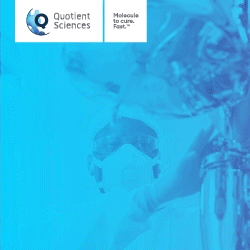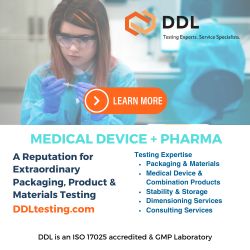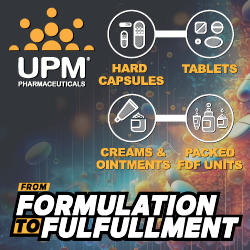Issue:September 2014
CLINICAL TRIALS - Recruitment Challenges for Proof-of-Concept Viral Challenge Trials
INTRODUCTION
There is a common perception that finding sufficient healthy volunteers for early phase clinical trials is a fairly straightforward process. On the contrary – patient recruitment is a difficult process, and finding adequate numbers of suitable subjects is frequently the biggest barrier to trial success, and the most common reason why most clinical trials face delays.
Viral challenge tests are an important proof-of-concept technique for new drug treatments or prophylactic vaccines directed against viral infections. They can also be of value in proving mechanisms for new targets for non-viral diseases that might be exacerbated by a viral infection, such as asthma attacks. For viral challenge tests, the recruitment situation is even more difficult than for traditional clinical pharmacology studies, even for healthy volunteers, because of the additional criteria subjects must meet to qualify.
Some recruitment challenges remain constant across all clinical trial types. Lack of volunteer awareness that the trial is happening is common, particularly in later stage trials in sick people. They might be afraid of being exposed to experimental drugs; they may also be concerned about receiving a placebo. And there is a whole host of access, language, literacy, cultural, insurance, and administrative barriers. For example, if the potential subject cannot read, it is difficult for them to give their informed consent. Even practical considerations like the ability to travel to the trial center may be an issue.
Challenges also exist around the site and protocol design. Inclusion or exclusion criteria may be overly restrictive, and a site involved in running the trial might find they have fewer eligible subjects than they expected or claimed they would be able to recruit. There may be other competing studies being run that deplete potential patients, physicians may have personal wishes, sites may have so many studies running already that they are understaffed, and there may be funding restrictions that impact on recruitment.
Trial sites use a number of tactics to assist in patient recruitment. They may advertise, whether in print, on the radio or TV, or even via advertisements on public transport. Call centers or direct mailings may be employed. Word of mouth is an important tool, whether from a network of physicians or specialists, patient associations, or via partnerships with universities. Increasingly, social media is an important tool, alongside patient and trial websites, such as clinicaltrials.gov and centerwatch.com. Those running the study may also outsource the task to a third-party recruitment company that specializes in tracking down potential subjects for clinical trials.
Perhaps surprisingly, the additional problems with viral challenge test recruitment result less from a fear among potential volunteers about being infected with a virus, or other ethical or psychological concerns. Rather, most drop out or are not accepted because they have been in contact with the virus that is being tested and have already developed antibodies to it. This is very different from the typical clinical pharmacology study, and for common viruses, it can exclude the vast majority of potential subjects.
Although they are occasionally run in sick patients, most viral challenge studies are carried out in healthy volunteers. Subjects are given a challenge strain, which is normally an attenuated virus that, in theory, produces a milder set of symptoms than would the original virus. The investigational antiviral vaccine or drug is administered to the subject, either before the viral challenge is made if the test is for prophylaxis, or afterward if the aim is treatment. Depending on the virus being tested, the volunteer may then be quarantined for a sufficient amount of time to prevent cross-infection, or spreading the virus to the general population.
FACILITY DESIGN
Safety concerns about the potential for wider infection means that a facility where viral challenge tests are run must meet several additional criteria that are not required for more standard clinical trials. It must have a Class II environmental license, and have HEPA filtration, a negative pressure system, and a cleanroom-style airlock with changing room and interlock linked to an alarm to prevent viral egress. This license is granted by the health authority after an auditing process, which assesses the quarantining of subjects within the unit. This was originally a requirement for facilities using genetically modified organisms, which, like viruses, could contaminate the environment.
For example, in SGS’s existing Antwerp clinical trial facility, which already had the required Class II environmental license valid until 2023, a dedicated area was installed to enable viral challenge tests to be carried out. It was renovated to provide an area that could be fully quarantined according to biosafety level L2-Q requirements, following the principles of reversed-barrier nursing. There are now 12 and very soon 20 separate one-bed rooms designed for subjects undergoing viral challenge studies, in addition to 80 beds for standard trials.
Implementing a separate viral challenge facility within an experienced clinical pharmacology unit makes running these types of tests more straightforward. The unit already has a large population of healthy volunteers and patients for the other pharmacological studies, increasing the likelihood of recruitment success. Prolonged periods of quarantine are possible, and complex laboratory techniques are available to collect body samples and prepare them for biomarker analysis, whether viral titres, protective antibodies, or cellular immunity are being studied. It also assists in the detailed assessment of those immune parameters that will aid in the identification of immunological correlations of infection and illness.
CASE STUDY: INFLUENZA
An example of a viral challenge test is an open label Phase I validation trial run in healthy volunteers. This study was designed to determine the optimum dose of virus to give to subjects in a subsequent trial evaluating the effectiveness of an antiviral drug. The trial involved a dose escalationacross three cohorts, and the aim was to recruit 36 volunteers for enrolment in the 29-day study. Subjects would spend 10 days in an isolation unit, and the primary endpoints were safety, viral load in nasal swabs, illness score, and immunogenicity – illness caused by the virus.
Potential subjects could not have had an influenza vaccination within the previous 2 years, and would have no contact with anyone who was immune-suppressed, under the age of 5 or over 65, or pregnant for the 2 weeks following the challenge to avoid them being put at risk. Those that met these criteria were prescreened for negative antibody titres using an influenza haemagglutination inhibition test.
Following a recruitment letter sent to 6,382 potential subjects on the volunteer database, 239 responded positively, and 213 of these attended the screening process. Of these, 57% failed the first screen because they were positive for influenza antibodies, leaving 90 potential subjects. Of these 90, 61 subjects expressed their willingness to participate in the study, and underwent the study-specific second screening 3 to 5 months later. Ultimately, just 29 of the original panel of volunteers were enrolled in the trial, with many of the drop-outs having failed the antibody titre screen. These dropout rates are significantly higher than in a standard clinical pharmacology trial – about 87%, in contrast to the more typical 50% for a normal trial.
CASE STUDY: RHINOVIRUS
There is a hypothesis that rhinovirus can trigger asthma attacks. One of the pathological mechanisms involves toll-like receptors (TLRs), and it is thought that these can be activated by the virus, provoking asthma attacks. A trial was designed to investigate whether a monoclonal antibody designed to block the TLRs would be effective at preventing asthma exacerbations triggered by rhinovirus infection.
The Phase I randomized, double-blind, placebo-controlled trial aimed to recruit 12 healthy non-asthmatic patients for the first part, followed by 60 asthmatic subjects in the second part. In both parts, subjects would be given the study drug via intravenous infusion prior to inoculation with human rhinovirus Type 16. Subjects would spend 10 days in the isolation unit at the start of the 56-day study. The primary endpoints were determined as safety and tolerability for the first part of the trial in non-asthmatic patients, and efficacy, including pulmonary function and patient-reported outcomes, such as asthma attacks, in the second part of the trial in asthmatic subjects.
The list of inclusion criteria for subjects was more extensive for this trial. Subjects had to have a bodyweight of 40 to 125 kg, with a BMI of 19 to 32. They must not have a positive serum neutralizing titre to human rhinovirus 16, the virus being tested; however, they needed a positive serology for herpes simplex virus 1, but with no signs or symptoms of active infection, and not receiving prescription treatment, as there is otherwise a potential risk of herpes simplex exacerbation and encephalitis. In addition, they cannot have regularly used tobacco within 6 months of screening, have a history of smoking of at least 10 pack years, or a positive urine test for the nicotine metabolite cotinine. This exclusion of smokers is essential, as smoking is an important promoter of bronchial constriction, and thus could affect trial results.
Again, a recruitment letter was sent to the volunteer database to recruit potential subjects for the first part of the trial, in healthy subjects. This yielded 160 volunteers for screening. There was a 92% screen failure rate, leaving just 13 subjects to be enrolled in the study. The main reason for screen failure was serological – a HRV16 positive titre, an HSV-1 negative titre, or both. This first part of the trial has now been completed in this small group of healthy volunteers who met the strict trial criteria.
Recruiting asthmatic subjects proved even more challenging, however. These were recruited through the patient database, advertisements, flyers, and the physician network. A total of 54 potential subjects were identified in this way, but every single one of them failed the screen. Clearly, patient recruitment has delayed this part of the trial, with none of the required 60 subjects being identified in the first screen. All available sources of subject recruitment, including the database, networks, and advertising, have been exhausted. This highlights the extreme recruitment difficulties that can result from the necessary additional subject requirements for a viral challenge study.
SUMMARY
While recruitment tactics are similar for clinical pharmacology and viral challenge trials, in reality, the pool of potential subjects needs to be significantly larger for a viral challenge trial because of the additional exclusion criteria, and the number that will fail the screening procedure. We have found that the high rate of screen failures is not due to patients’ fear of viral inoculation or reluctance to be isolated for a period after virus administration; indeed, there is very little difference in willingness between the two types of trials.
Those experienced in clinical pharmacology will understand that very probing questions have to be asked of volunteers and patients. As long as these are done in an open and honest way, few potential subjects will refuse to answer. The recruiter needs to have the communication skills to facilitate this, and explain why the trial is being conducted and its long-term benefits, and any potential risks they may be exposing themselves to. Trials may involve invasive procedures, and informed patient consent is vital.
Many of the viruses used in viral challenge tests are extremely common, and subjects are very likely to have encountered them at some point throughout their lives. This can cause significant problems in finding “clean” subjects. It’s a numbers game. Maximizing success involves approaching a much larger group of potential subjects than normal, and thus adding viral challenge testing to the activities of a large clinical pharmacological unit is the best way to achieve recruitment success.
Viral challenge testing is an important factor in optimizing the overall development process for antiviral treatments. Fortunately, bearing in mind the difficulty in recruiting suitable subjects, the number of patients required to obtain meaningful results in a viral challenge is substantially lower than for community-based studies looking at naturally acquired infection. This can offer savings in clinical development costs by avoiding initial efficacy studies in much larger populations, which also often require an outbreak of that infection to be under way. It also minimizes safety risks for infected volunteers, while simultaneously protecting the outside world from a potential spread of infection.
To view this issue and all back issues online, please visit www.drug-dev.com.

Dr. Robert Lins earned his Medical Degree from the University of Gent, Belgium, specializing in Nephrology and Hypertension. In addition, he holds a Doctor of Philosophy degree in Medical Sciences from the University of Antwerpen, Belgium. Dr. Lins is a European Hypertension Specialist, a Fellow of the Belgian College of Pharmaceutical Physicians, and formerly a Clinical Professor at the Department of Internal Medicine, University of Antwerp. He held the position as the Director of the Nephrology-Hypertension Department at Stuivenberg Hospital in Antwerp, eventually becoming General Manager of one of the hospitals, belonging to the Hospital Network of Antwerp (ZNA). Dr. Lins started a Phase I unit in Stuivenberg Hospital in 1987 that was subsequently acquired by SGS. From 2007 until 2011, he was Managing Director of SGS Life Science Services Clinical Research. Dr. Lins currently continues his activity as Project Director Vaccines and Senior Clinical Adviser for SGS.
Total Page Views: 3511














